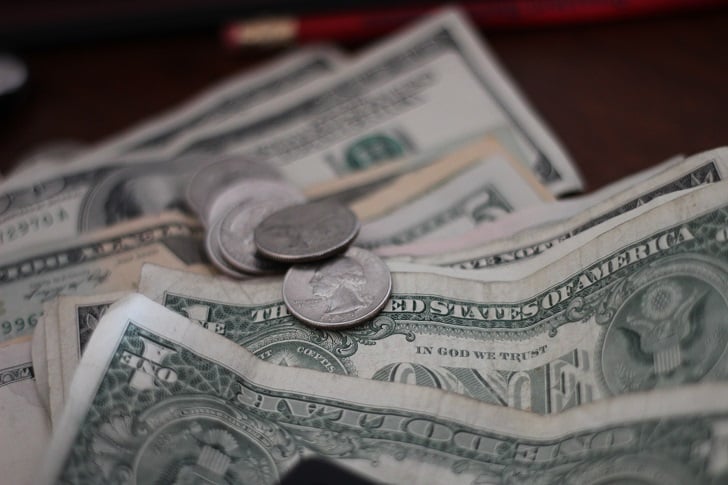
A Step-by-Step Guide on How to Spend Less and Save More in 2020

Most New Year’s resolutions involve the phrases “spend less” and “save more”. However, a lot of people end up failing to stick to them.
The last decade saw a steady income growth, but recent research found out that household spending also rose. About 21% of Americans have said that their spending increased in the last year, according to a CNBC survey. The majority of them didn’t disclose the reason, while only 22% of them said that it’s due to a new or better paying job.
The result? Most families now have little wiggle room for unexpected expenses in their budgets. In a survey by Bankrate, a personal finance website, it’s revealed that only 40% of Americans have enough cash cushion to cover unforeseen $1,000 expenses like a car repair or a trip to the emergency room. Fortunately, 2020 can be better if you follow these five steps to spending less.

According to a recent survey, around 21% of Americans say that they have spent more in the last year.
Rank Your Expenses
Experts first differentiate fixed expenses from optional ones. Track the things you spend on and list your monthly, recurring, and one-time expenses. After that, rank each of them based on how important it is.
Prioritize your essentials; your “needs” that you can’t live without. These include food, housing, transportation, and child care. Savings for emergencies and retirement comes next, followed by your “wants” or nonessential expenses like vacations, eating out, or streaming services like Netflix.
Challenge Every Expense
Go over the list again and check which expenses you can adjust. Consider how much you’re spending and figure out if you could pay less for it or cut it from your expenses completely. Ask yourself if you use all your subscription services or your gym membership enough. If you don’t use it that much, you might consider losing it.
It’s often possible to get a better rate on recurring expenses like car insurance, saving you a significant amount. If you fail to compare car insurance plans, an analysis by NerdWallet reveals that you might be missing out on savings of around $416.52 a year.

Check your non-essential expenses like gym memberships if they are worth keeping in your budget.
Shed Off a Some “Wants”
Once you have already streamlined your list, cut out a few expenses that you consider a want and not a need—at least temporarily. Instead of taking an Uber or booking through a ride-sharing service, take public transportation. Rather than eating out or having food delivered, try cooking at home whenever you can.
Certified financial planner Tom Watts, the top honcho of New York-based Watts Capital, recommends starting with a small goal like staying within your budget for the day or an entire week. You can reward yourself once you achieve it, as long as it won’t cost you that much.
Control Impulse Purchases
Impulse buying is often the culprit in messed-up budgets, especially with the popularity and convenience of online shopping. Watts refers to it as “Amazon Spending”. A quick way to fight off this urge is by distancing yourself from social media to some extent.
In a millennial money study conducted by Fidelity involving 2,000 adults aged between 22 and 27, around 63% of the millennials believe that social media hurts their financial well-being.
According to research by Allianz Life Insurance Company of North America, more than half of millennials’ impulse purchases (using money they didn’t intend to spend) were spent on products that caught their attention while browsing their social media feeds. Almost 40% of young adults admitted that they spent money that they didn’t have, according to a report by Credit Karma. They earned debts just to keep up with their peers.
Christopher Tracy of budgeting app Mvelopes suggests moving your credit card information offline to curb impulse spending. Also, try to limit your usage of social media or unfollow people or pages that may trigger unnecessary purchases.

Impulse buying can hurt your budget.
Go On a Cash Diet
Make some simple changes to your lifestyle that could potentially help you save thousands of dollars in a year. Call it a cash diet.
Those who find it hard to stick to a budget can try switching to a debit card for a month. Or, you can pledge to only spend the cash you have on hand and keep your credit cards away for a few weeks. If you have to resort to using your credit card for a certain purchase and won’t be able to pay for it in full in the next month, then you probably shouldn’t buy it.
More in Business
-
Why American Consumers Are Falling Behind on COVID-Era Debt
When the world was grappling with the health crisis brought on by COVID-19, the U.S. economy faced an equally formidable challenge:...
November 27, 2023 -
Dr Dre and Ex-Wife Nicole Young Finalise $100m Divorce Settlement
After months of legal proceedings, Dr Dre, the legendary rapper, producer, and businessman, officially brought his tumultuous divorce from ex-wife Nicole...
November 22, 2023 -
5 Tell-Tale Signs That It Is Time to Say Goodbye to Your Current Job
Are you feeling like your job is more like a ball and chain than a fulfilling career? The daily grind, the...
November 19, 2023 -
WWE Signs $1.4 Billion Broadcasting Contract for SmackDown
In an explosive turn of events, World Wrestling Entertainment (WWE) has just unleashed some earth-shattering news for its legions of fans....
November 9, 2023 -
Navigating the Mortgage Maze as Interest Rates Take a Historic Leap
The U.S. housing market is nothing short of a dynamic entity. It evolves, reacts, and sometimes, just like the current real-estate...
November 3, 2023 -
Celebrity Couples Where the Woman Has a Higher Net Worth
In a world where gender roles and financial dynamics constantly shift, it’s not unusual to find celebrity couples where the woman...
October 27, 2023 -
Why the Gender Pay Gap Could Be Worsening
Picture this: Two college students, Alex and Charlie. Both are bright, have the same interests, and are ready to embrace the...
October 19, 2023 -
JC Penney’s Remarkable $1 Billion Revival Plan
In a remarkable turnaround, JC Penney unveiled a bold $1 billion revival plan, breathing new life into a brand that faced...
October 12, 2023 -
Shattering the American Dream: Mortgage Rates, Inflation & Cost of Living
You know that feeling when you are dreaming of something you have wanted for so long, only to watch it vanish...
October 6, 2023















You must be logged in to post a comment Login